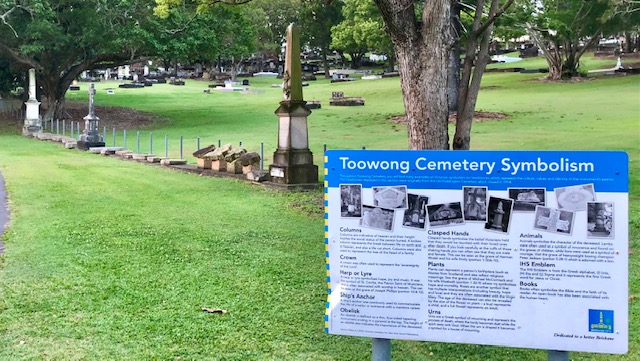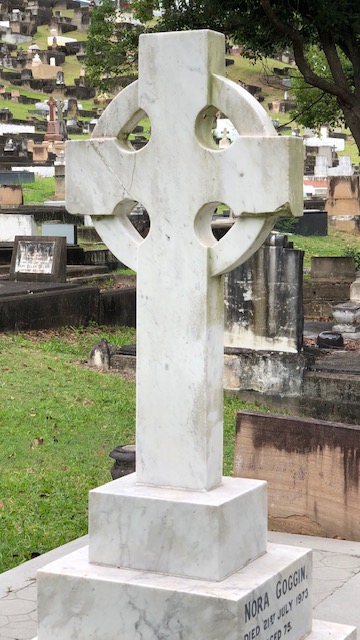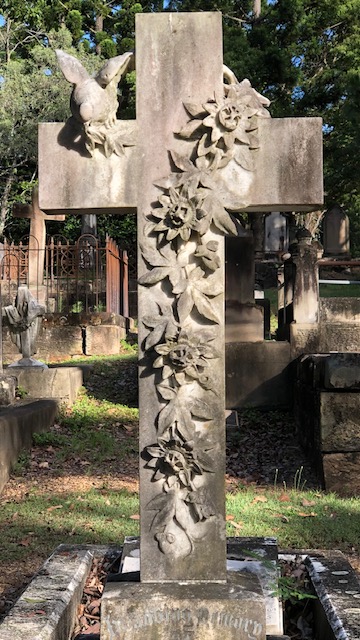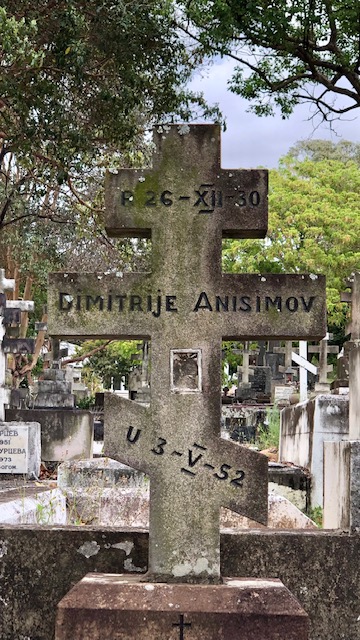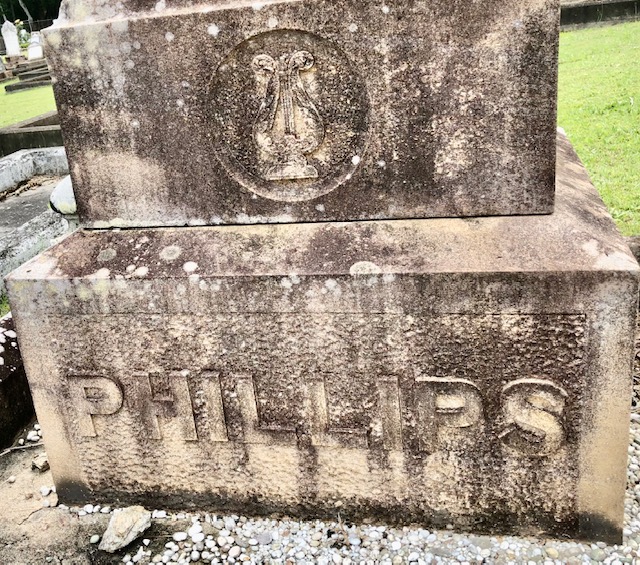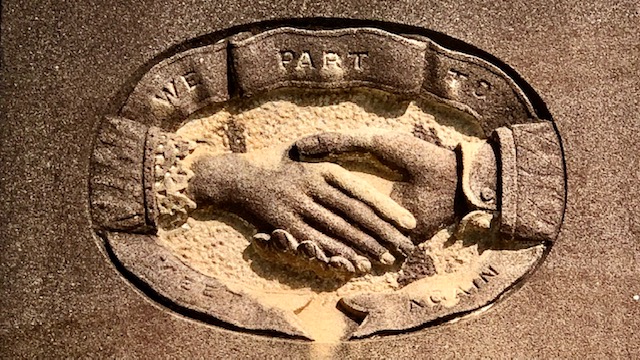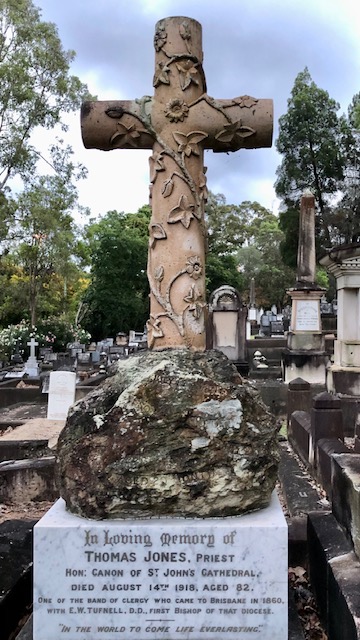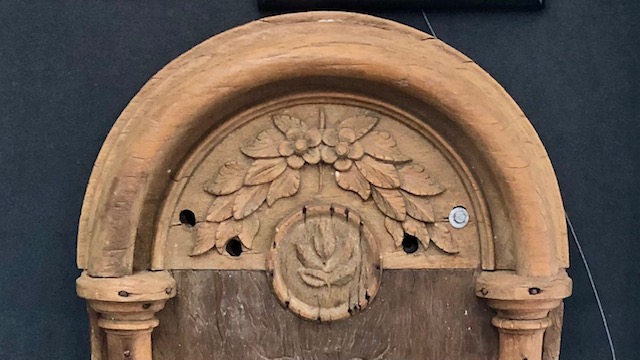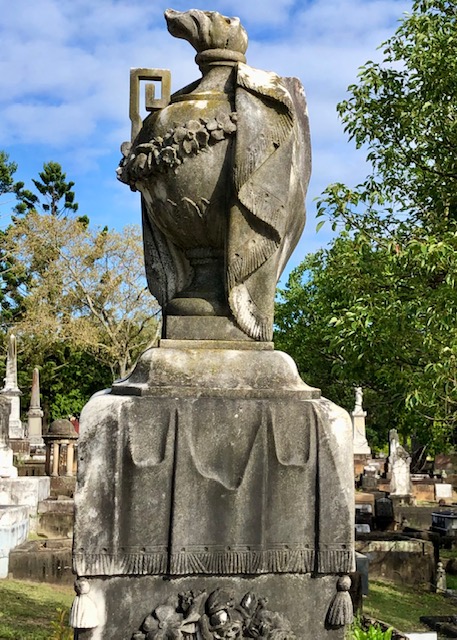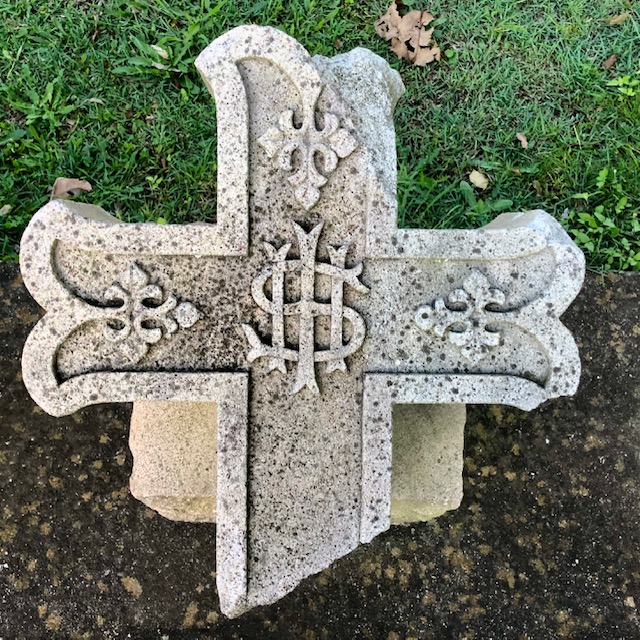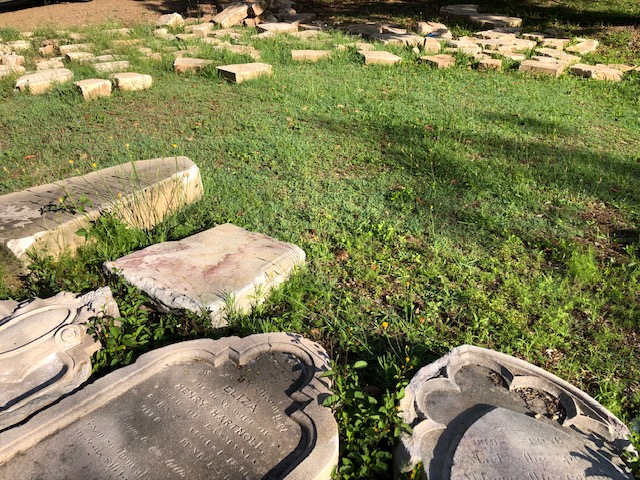Headstone Symbols
Toowong Cemetery Symbolism Display
The Toowong Cemetery is a Brisbane icon and was once the city's main cemetery. Toowong Cemetery officially opened in July 1875, however burials took place from 1871 (most notably Queensland's second governor, Colonel Samuel Blackall in 1871).
Toowong Cemetery opened during Queen Victoria's life (1819 - 1901) and you'll see the traditions and symbols from her reign throughout the cemetery.
In Portion 2 of the cemetery, at the intersection of Soldiers Parade and Garland Avenue, you'll find a display of symbols on headstones. Some headstones are from the old Paddington cemetery which closed in 1914.
Headstones within the Cemetery come in many shapes and contain mysterious signs. Throughout the first half of the 19th Century headstones featuring bust of heads and shoulders were very popular. However by the 1880's angels, messengers of God and pillars had become fashionable. Most of these were placed on a three-tiered base, to represent faith, hope and charity.
The Cross
The cross comes in a variety of shapes. The Celtic cross (with its arms enclosed in a circle) was used mostly by those of Irish origin prior to the end of the 19th Century before they became a popular choice (regardless to national heritage). The unadorned cross was known as the Calvary cross, representing Christ's crucification. The Orthodox cross with three bars symbolises the cross Christ was crucified on, with the title board (top bar), the bar on which the Lord's hands were nailed (middle bar) and the footrest (bottom bar).
Columns
Columns are indicative of heaven and their height implies the social status of the person buried. A broken column represents the break between life on earth and in heaven, and also a life cut short. Columns were also used to represent the loss of the head of family.
Crown
A crown was often used to represent the "sovereignty of the Lord".
Harp or Lyre
A harp or lyre symbolises hope, joy and music. It was the symbol of St. Cecila, the Patron Saint of Musicians, and is often associated with worship in heaven. This can be seen on the grave of Joseph Phillips (10-8-12).
Ship's Anchor
A ship's anchor was commonly used to commemorate the life of a sailor or someone with a maritime career.
Obelisk
An obelisk is defined as a thin, four-sided tapering monument ending in a pyramid at the top. The height of the obelisk also indicates the importance of the deceased.
Clasped hands
Clasped hands symbolise the belief Victorians held that they would be reunited with their loved ones after death. If you look carefully at the cuffs of those shaking hands, you can often see that they are male and female. This can be seen are the grave of Herman Wuiski and his wife Emily (1-50A-10).
Plants
Plants can represent a person's birthplace (such as thistles from Scotland) and also reflect religious meanings. See the grave of Michael McCormack and his wife Elizabeth (1-20-9) where ivy symbolises hope and mortality. Roses are another symbol that has multiple interpretations (including beauty, hope and love) and they are often associated with the Virgin Mary. The age of the deceased can also be revealed by the size of the flower or plant - a bud represents a child, and a full flower represents an adult.
Urns
Urns are a Greek symbol of mourning and represent the process of death, where the body becomes dust while the spirit rests with God. When the urn is draped it becomes a symbol of the house mourning.
Animals
Animals symbolise the character of the deceased. Lambs were often used as a symbol of innocence and found on the graves of children, while lions were used as a symbol of courage. Visit the grave of heavyweight boxing champion Peter Jackson (5-28-1) which is adorned with a lion.
IHS Emblem
The IHS Emblem is from the Greek alphabet, (I) Iota, (H) Eta, and (Σ) Sigma and represents the first Greek word for Jesus or Christ.
Books
Books often symbolise the Bible and the faith of its reader. An open book has also been associated with the human heart.
Lost and Found
In Steele Rudd Avenue you'll find a collection of broken headstones. Where did they come from? Why are they here? What is planned?
Source
Gillon, E. (1972). Victorian Cemetery Art. New York: Dover Publications
Copyright
Toowong Cemetery Symbolism, © Brisbane City Council 2016, used under CC BY 4.0. Minor formatting changes applied. The Lost and Found section, photos and links have been added.
